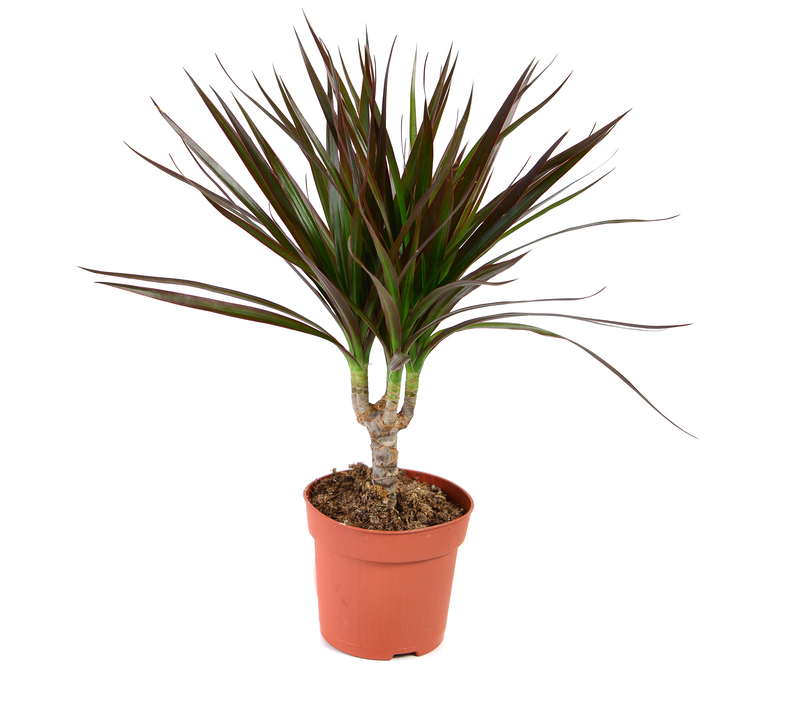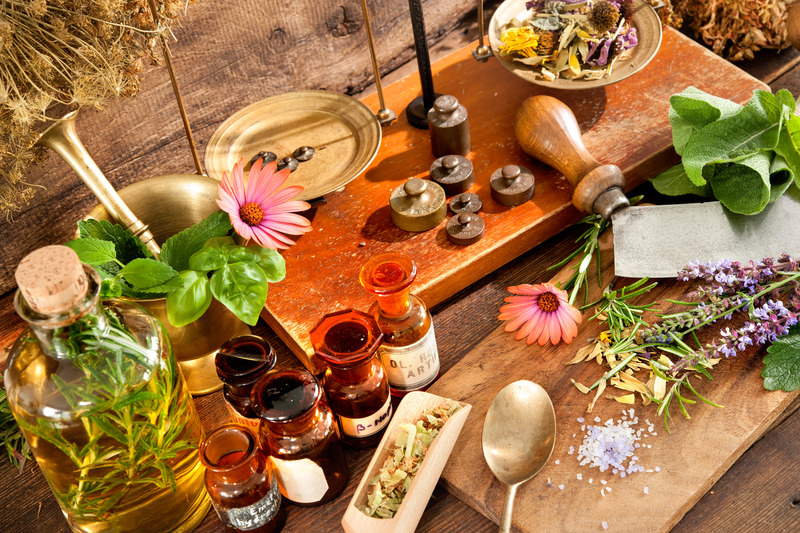Gardening Buffs: Don't Miss These Essential Tools
Posted on 16/08/2025
Gardening Buffs: Don't Miss These Essential Tools for a Thriving Garden
Are you a devoted gardener seeking ways to elevate your gardening experience? Whether you're a seasoned green thumb or a budding enthusiast, having the right equipment can make all the difference. In this comprehensive guide, we'll explore the essential gardening tools every gardening buff should own. Discover top tool picks, smart usage tips, and maintenance advice to keep your garden flourishing season after season.

Why the Right Gardening Tools Matter
Having high-quality gardening tools is crucial for several reasons. First, they help you work more efficiently, saving both time and energy. Second, the correct instruments protect your plants and soil, minimizing accidents such as root damage. Finally, sturdy garden tools often last longer, making them a smart investment for dedicated gardeners. In this article, we'll delve into the core tools you shouldn't miss and discuss how they contribute to garden success.
Must-Have Tools for Gardening Buffs
1. Hand Trowel
The hand trowel is a gardening classic. Compact and versatile, its pointed blade allows for easy digging, transplanting, and planting. For any gardening aficionado, a sturdy hand trowel is indispensable. Look for models with ergonomic, comfortable handles and stainless-steel blades for longevity.
- Best For: Planting bulbs, annuals, and perennials
- Gardening Tip: Clean your trowel after each use to prolong its life.
2. Pruners (Secateurs)
Pruning is vital for healthy plants. Gardening buffs know that a pair of sharp, dependable pruners can handle everything from deadheading flowers to cutting back branches. There are two main types: bypass (for green, live growth) and anvil (for dry, woody stems).
- Best For: Shaping shrubs, harvesting herbs, and cutting back perennials
- Maintenance Tip: Sharpen blades regularly and lubricate the joints to keep them performing at their best.
3. Garden Gloves
Protect your hands from thorns, dirt, and chemicals with durable garden gloves. Gloves are often underestimated but are a must-have for comfortable and safe gardening. Choose gloves that are both comfortable and offer good grip depending on your gardening activities. Rubber-coated gloves work well in wet conditions, while leather gloves are best for thorny gardening tasks.
- Best For: Pruning roses, handling compost, and general gardening
- Pro Tip: Wash gloves frequently and let them air dry to prevent odors and mildew.
4. Spade (Digging Shovel)
No gardening toolkit is complete without a spade. With its flat, rectangular blade, the garden spade is ideal for digging holes, edging, moving soil, or lifting sod. Invest in a full-sized, robust spade with a steel blade and a strong wooden or fiberglass handle for optimal performance.
- Best For: Digging planting holes, edging beds, and lifting turf
- Tip: Clean off mud and debris after use to prevent rust and blade dulling.
5. Gardening Fork (Digging Fork)
A digging fork, sometimes called a garden fork, is essential for breaking up soil, aerating, and lifting plants. Its multiple robust tines make it perfect for heavy-duty tasks, such as turning compost, uncovering root vegetables, or loosening compacted soil.
- Best For: Compost turning, soil aeration, and rooting up carrots or potatoes
- Pro Tip: Use your fork to gently break up clumps of earth without harming plant roots.
6. Watering Can or Hose
Consistent watering keeps your garden thriving. For gardening buffs, a sturdy watering can or high-quality hose is as important as any cutting tool. Choose a can with a detachable rose for delicate seedlings or a soaker hose to supply beds evenly.
- Best For: Daily watering, feeding liquid fertilizer, and gentle irrigation
- Tip: Store hoses away from direct sunlight to prevent cracking and leaks.
7. Rake
Keep your garden beds and lawns tidy with a rake. There are two main types: leaf rakes--wide and flexible for clearing leaves--and garden rakes--sturdy with short tines for breaking up soil or spreading mulch.
- Best For: Removing debris, leveling soil, spreading mulch
- Usage Tip: Lightly rake the soil surface before seeding for better seed-soil contact.
8. Hoe
Fight weeds effectively with a garden hoe. The classic hoe makes it easier for gardeners to break up soil crust, weed, and create furrows for sowing seeds. Garden buffs often own both a Dutch hoe for surface weeding and a draw hoe for deeper cultivation.
- Best For: Weeding, shaping beds, and making seed drills
- Tip: Keep the blade sharp and use long sweeping motions for efficiency.
9. Wheelbarrow or Garden Cart
A wheelbarrow saves time and energy. Essential for transporting soil, compost, plants, or bulky tools, every gardening aficionado should invest in a sturdy wheelbarrow or garden cart.
- Best For: Moving heavy loads, transporting mulch, or garden debris
- Maintenance: Check tire pressure regularly and store under cover to prolong its lifespan.
10. Garden Kneeler or Pad
Comfort is key for long gardening sessions. A garden kneeler or cushioned pad protects your knees as you plant, weed, or prune. Some kneelers convert to a handy bench, making them a multifunctional choice for gardening buffs who spend hours tending to their plants.
- Best For: Reducing strain on knees and back during prolonged gardening tasks
- Pro Tip: Choose a lightweight, foldable model for easy storage.
Bonus Tools Every Gardening Enthusiast Should Consider
If you've mastered the basics, there are a few more essential garden tools to further streamline your efforts and enhance your gardening experience:
- Soil Tester: Monitor pH and nutrient levels to give your plants the best growing conditions.
- Garden Scissors: Perfect for cutting herbs, deadheading, or delicate snipping jobs.
- Plant Supports or Stakes: Ideal for staking tomatoes, beans, or floppy perennials.
- Compost Bin: Start your own organic fertilizer production and make use of garden waste.
- Seed Organizer: Keep track of your seeds with a dedicated storage box or binder.
How to Choose the Right Gardening Tools
Investing in the right gardening essentials is about more than grabbing the nearest spade or pruner from the store. Here's what gardening buffs should look for:
- Quality Materials: Stainless steel blades resist rust, while fiberglass or hardwood handles offer strength and comfort.
- Comfort: Ergonomic grips reduce hand fatigue, especially for prolonged or repetitive tasks.
- Tool Weight: Choose tools that are lightweight enough for ease of use but durable enough for hard work.
- Intended Use: Consider the types of gardening you do most and select tools matched for those needs.
- Brand Reputation & Warranty: Trusted brands often offer better warranties and customer support.
Maintaining Your Essential Garden Tools
Regular maintenance ensures your gardening tools last for years and perform optimally. Every gardening buff should establish a simple maintenance routine:
- Clean: Remove soil and sap after each use with water and a brush. Dry tools thoroughly to avoid rust.
- Sharpen: Keep blades on pruners, hoes, and spades sharp using a whetstone or file.
- Oil: Lubricate metal surfaces lightly with vegetable oil to prevent corrosion.
- Store Properly: Hang up tools in a dry, ventilated shed or garage.
- Inspect for Damage: Check handles for cracks and blades for nicks. Repair or replace as needed.
Essential Tools for Specialized Gardening Buffs
Urban Gardeners
City-dwellers or balcony gardeners have unique requirements. Compact tools, multi-function designs, and container-specific implements like small watering cans or hand forks are invaluable. Consider vertical garden planters, lightweight rakes, and portable tool caddies.
Organic Enthusiasts
For those growing organic vegetables, tools made from sustainable materials and manual (rather than motorized) options are best. Look for bamboo-handled tools, natural-fiber twine, and hand weeders.
Ornamental Fans
Flower bed lovers can benefit from delicate, precise implements such as floral shears, dibbers, and bulb planters for optimal results.
Large-Scale Planners
If you're tending a large garden or mini-farm, durable, long-handled tools, a robust wheelbarrow, and powered cultivators can save you significant time and effort.
Smart Storage Solutions for Gardening Tools
Proper storage keeps your essential garden tools organized and ready for use. Here are some useful ideas for gardening buffs:
- Wall Racks: Hang long-handled tools neatly off the ground.
- Tool Sheds: Invest in a secure, weather-resistant garden shed for big collections.
- Portable Totes: Store small hand tools, gloves, and seeds in a carryall tote for easy access.
- Magnetic Strips: Attach pruners and scissors to a magnetic strip above your workspace.
- Bucket Organizers: Slip pockets onto a 5-gallon bucket to carry multiple tools at once.

Top Tips for New Gardening Buffs
- Start with the basics and expand your toolkit as you encounter new gardening challenges.
- Spend a little more on well-built tools that will last, rather than replacing them every season.
- Keep a garden journal to track which tools work best for your tasks and terrain.
- Don't ignore tool comfort: padded handles, lightweight designs, and adjustable grips can make long gardening sessions easier.
- Whenever possible, test tools in-store for comfort and balance before buying.
Conclusion: Equip Yourself for Gardening Success!
For every gardening buff, the journey to a vibrant and healthy garden starts with the right tools. From the humble hand trowel to ergonomic pruners and versatile wheelbarrows, each essential gardening tool serves a crucial role. Invest in quality, maintain your tools, and enjoy cultivating your little piece of paradise. Happy gardening!
- Are you ready to upgrade your garden arsenal? Start with these essential tools and watch your gardening experience bloom!
Remember: The best garden is not just about the plants you choose, but about having the perfect tools in your hands.

